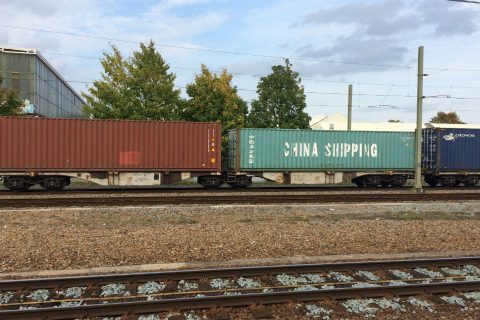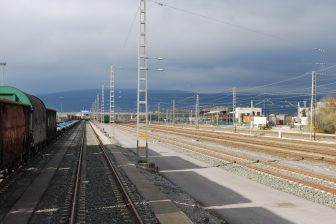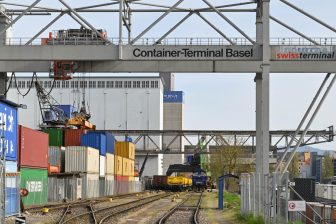
Growth forecast Eurasian rail freight 15% per year
Rail freight traffic between Europe and Asia is expected to grow with 14.7 per cent per year over the next decade. Traffic volumes could reach 636,000 TEU in 2027, whereas the total volume in 2016 amounted to 141,000 TEU. The forecast indicates a total potential growth with 351 per cent of cargo moved between the continents. This was the conclusion of a study called Eurasian rail corridors: what opportunities for freight stakeholders? carried out by Roland Berger consulting group in cooperation with UIC, presented in Paris last Friday.
The study revealed a best case and worst case forecast. According to these data, the total Eurasian rail freight volumes could reach 742,000 TEU at best, or, considering less favourable conditions, 437,000 TEU in 2027. It also reveals which factors could lead to this growth. In making these estimations, it considered the northern routes via Russia and Kazakhstan and the southern routes via Turkey and Iran. The latter are already operative, but regular services have not yet been established.
Where to win?
The focus of operators and railways should be on operational efficiency and customer-friendly product development, the study presented. As rail freight has lost competitiveness with the sea freight alternative in terms of costs, the potential is seen in stronger consolidation and better balance of operations. Shippers need more reliability and better information on arrival times. Eastbound traffic must be developed further and as volumes are increasing, potential bottlenecks should be avoided though tailored coordination of traffic flows.
On European freight corridors, a lot of challenges remain. Harmonisation is the main challenge, as border crossings are currently lengthy and complicated procedures and operators are bound to adapt locomotives and personnel to meet the standards per country, raising the cost and quality of the operation. Improvements can especially be made at the important border crossing in Poland. Additional personnel should be employed here. In the broader field, more intensive exchange between the players involved across borders is needed to improve interoperability on the European corridors.
On the southern routes, a lot remains to be done. Whereas infrastructure on the northern routes is largely in place, traffic via Turkey and Iran will see a boost as new lines are constructed and price incentives are introduced. Several intiatives are currently underway to support this development, such as a new double gauge electricfied 9000 kilometer line in Iran and Afganistan and a new railway service between Mersin in Turkey and Tehran, operated by Railcargo as soon as next month. Moreover, as on all Eurasian routes, operational efficiency remains a point of improvement.
Potential according to route
For the northern routes, there are three major entry points into Europe, all gateways of the important European Rail Freight Corridors (RFC’s). The North-Sea Baltic corridor with the border-crossing terminal of Malaszewicze/Brest is the most important gateway and is expected to maintain this position, with an estimated share of more than fifty per cent of all Eurasian traffic in 2027. The Mediterranean and Rhine-Danube or Czech – Slovak corridors are currently of limited use due to political uncertainty in Ukraine. However, if this conflict ends, these routes could account for a third of all traffic in ten years.
For the southern routes through Turkey and Iran, the Orient – East Meditarranian corridor via Romania and Bulgaria is the most important gateway to Europe. However, the southern routes represent a much smaller proportion of total Eurasian freight volumes and this is expected to remain so in the future, with a forecasted share of eight per cent in 2027.





